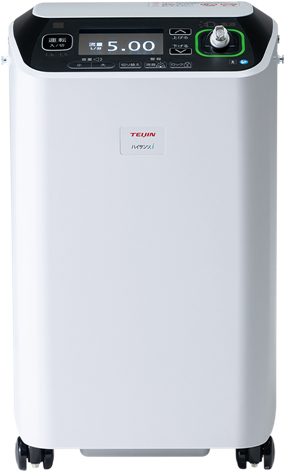Materiality and KPIs
The Teijin Group recognizes social, environmental, and other sustainability-related matters as management issues. Based on this recognition, the Group has identified the following risks and opportunities as important social and management issues. By establishing key performance indicators (KPIs) for each of these issues and promoting initiatives toward them accordingly, we are working to realize our long-term vision.
Important Social Issues
Materiality 1 Climate Change Mitigation and Adaptation

With regard to climate change mitigation, we provide solutions centered on the transition to lightweight, highly durable mobility realized through high-performance and high-value-added materials. For climate change adaptation, we are offering solutions that help reduce damage and facilitate a prompt recovery in the event of a natural disaster, through infrastructure reinforcement materials that make use of high-performance materials and technologies and services in the IT and healthcare domains. Moreover, in an effort to reduce the impact our business activities have on the global environment, we are phasing out coal-fired thermal power while promoting energy conservation and renewable energy and pursuing process innovation and other types of technological innovation.
| Opportunities |
|
|---|---|
| Relevant Businesses and Examples of Products and Services | Automotive composites, carbon fiber intermediate materials for aircraft, pressure vessels, optical fiber cable reinforcement materials, mooring ropes for offshore wind power generation, battery separators, high-performance fiber reinforcing material, rainwater storage blocks, cooling material, thermal insulation-related products, etc.

|
| Risks |
|
| KPIs |
Materiality 2 Achievement of a Circular Economy

By providing highly durable and high-quality products that extend the lifespans of products, such as reinforcing material for high-performance tires and conveyor belts, and recycling technologies, such as polyester and aramid fibers, we are improving resource circulation throughout the value chain. Furthermore, as part of our efforts toward resource circulation in our business activities, we strive to reduce waste through reuse and recycling initiatives, expand products that require less water, and use water more efficiently in these activities.
| Opportunities |
|
|---|---|
| Relevant Businesses and Examples of Products and Services |
Reinforcing material for high-performance tires, polyester fiber recycling technology, aramid fiber recycling technology, bio-based material, chemical recycling licensing services, fishing net recycling business, home healthcare medical device rental business, etc.

|
| Risks |
|
| KPIs |
Materiality 3 Safety and Security of People and Local Communities

We deliver solutions using information technology and high-performance materials providing both security and functionality, such as aramid fiber, which can withstand the high temperatures of fires; ultra-lightweight ceiling materials that reduce the risk of ceilings collapsing at times of earthquake disaster, and safety confirmation services. Furthermore, by means of our filters utilizing nano-level microtechnology and environmental engineering, we help prevent environmental pollution and contribute to environmental purification. We also thoroughly monitor and manage hazardous chemicals in our business activities that could damage ecosystems or pollute the environment and make systematic efforts to reduce such chemicals.
| Opportunities |
|
|---|---|
| Relevant Businesses and Examples of Products and Services |
Protection apparel, high-performance fiber reinforcing material, rainwater storage blocks, disaster response and support map systems for home healthcare patients, seat sensor membranes, ultra-lightweight ceiling materials, airbag fabrics and other safety components, asbestos substitutions, bag filters, disaster mitigation-related fiber products, environmental engineering, etc.

|
| Risks |
|
| KPIs |
Materiality 4 Realization of Healthy and Comfortable Living for People

Through the comprehensive utilization of pharmaceuticals, medical devices, medical products, and IT services, we provide solutions that support a healthy and comfortable living for people. In particular, we aim to resolve issues for patients, families, and communities in need of greater support, centered on the areas of rare and intractable diseases. Also, to provide workers with safe and healthy work environments, we are taking measures to eliminate occupational accidents, remedy long working hours, and improve employee's mental health.
| Opportunities |
|
|---|---|
| Relevant Businesses and Examples of Products and Services |
Pharmaceuticals, home healthcare devices, implantable medical devices, regenerative medical products, services related to comprehensive community-based healthcare systems, functional interior products, high-performance apparel, heat stroke prevention clothing, medical gowns, etc.

|
| Risks |
|
| KPIs |
Important Management Issues
Materiality 5 Further Strengthening of Our Sustainable Management Base

We are working to strengthen our management base, which serves as the foundation for realizing our long-term vision of becoming "a company that supports the society of the future." To that end, we endeavor to build an environment in which diverse human resources, the driving force toward the realization of our long-term vision, can be active and to train such human resources; to strengthen corporate governance, which is essential for sound and sustained growth; to promote corporate ethics and compliance activities as the basis of trust; to respond properly to various risks; to ensure information security, which is becoming increasingly important in the IT society; to engage in responsible procurement and manufacturing to gain customer trust; and to give due consideration to the environment, security and disaster prevention, and health.
Materiality Identification Process
The Teijin Group ascertains and organizes a wide range of social issues, and analyzes and identifies important issues from the perspective of importance to the Teijin Group and impact on stakeholders. The Chief Sustainability Officer then engages in dialogue with external experts, and identifies Teijin Group materiality at the Management Committee meeting.

STEP1 Ascertain and organize issues
Ascertain and organize a wide range of trending issues in society, starting with the Sustainable Development Goals (SDGs)
STEP2 Determine degree of importance
Determine degree of importance to the Teijin Group based on degree of impact on businesses (both positive and negative), and probability of anticipated occurrence
STEP3 Extract important issues
Among issues analyzed in STEP 2, those of particular importance to the Teijin Group with a particularly high impact on stakeholders are extracted as important issues
STEP4 Dialogue with external experts
Dialogues are held with external experts regarding the Teijin Group's materiality identification process and the extracted issues
STEP5 Identify materiality
Teijin Group materiality is identified through discussions and confirmation by meetings of the Management Committee meeting
